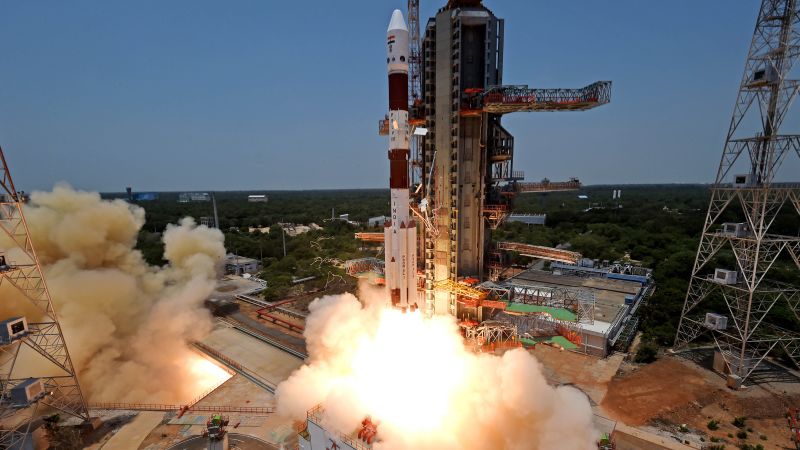Sign up for CNN’s Wonder Theory science newsletter. Explore the universe with news of amazing discoveries, scientific advances, and more.
CNN
—
India has launched its first spacecraft dedicated to studying the sun, a month after historic successes for the country’s civilian space efforts.
The spacecraft, called Aditya-L1, lifted off from Sriharikota Island, located off the Bay of Bengal, at 11:50 a.m. local time on Saturday (2:20 a.m. ET). It is headed to a parking spot in orbit about 930,000 miles (1.5 million kilometers) from Earth.
The successful launch of Aditya-L1 comes less than two weeks after India’s space agency, the Indian Space Research Organisation, created history by landing the Chandrayaan-3 spacecraft on the moon’s surface. This achievement makes India only the fourth country in the world – and the second in the twenty-first century – to land a vehicle safely on the surface of the moon.
This task is expected to be completed next week.
Meanwhile, Aditya-L1 is heading to its destination at Lagrange point 1, the region between the Sun and Earth where the gravitational force of both celestial bodies cancel each other out. This location will allow Aditya-L1 to remain in orbit, in an ideal position to observe the Sun’s activities, with minimal fuel consumption.
This position “will provide a greater advantage for monitoring solar activities and their impact on space weather in real time,” according to the space agency.
The spacecraft is equipped with seven scientific instruments, four of which will be trained directly on the Sun while the others will study solar wind particles and magnetic fields passing through the Lagrange 1 point.
The mission’s main objectives include studying the sun’s upper atmosphere and various solar phenomena, such as the coronal mass ejection – or massive ejection of plasma from the sun’s outer layer.
Information from the Aditya-L1 experiments will provide a clearer picture of space weather, or the term used to describe the magnetic waves that ripple through our solar system. Space storms can have an impact on Earth when they reach our atmosphere, sometimes affecting satellites, radio communications and even power grids, according to the US National Oceanic and Atmospheric Administration.
India’s Aditya-L1 will add to information collected on other missions designed to study the Sun, including NASA’s Parker Solar Probe, which in 2021 became the first spacecraft to “touch” the Sun.
India’s first dedicated solar mission adds to the country’s position as an emerging space superpower.

“Unapologetic tv specialist. Hardcore zombie trailblazer. Infuriatingly humble problem solver.”







More Stories
The Ruler of Dubai announces the construction of the largest airport terminal in the world Aviation news
A senior Qatari official urges Israel and Hamas to make more efforts to reach a ceasefire agreement
Venice Biennale: The Pope makes a historic visit and declares that “the world needs artists”